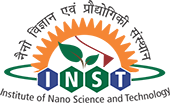Efficient photoinduced intramolecular charge transfer (ICT) from donor to acceptor in dye molecules is the functional basis and key property in the working of a dye-sensitized solar cell (DSSC). To understand the ICT process in photoexcited dye molecules, we analyze the electronic properties and structural parameters of a chosen set of experimentally synthesized donor–acceptor (D–A) and donor−π-spacer−acceptor (D−π–A) type dye molecules in their ground, excited, and cationic states. The correlation between structural modification and charge redistribution in different parts of the molecule helps to identify the extent of π-conjugation and spatial rearrangement of electron density localization along the molecular skeleton. We find that prominent twisting of several groups and the resulting molecular bond rearrangements in larger parts of the molecule promote efficient donor to acceptor ICT, such as in D–A type ADEKA1 and C275 dyes. Thus, based on the modest computation of structural and electronic properties of dye molecules in their respective ground, excited, and cationic states, we identify the desired structural changes that facilitate tunable intramolecular charge transfer to highlight a simple and direct prescription to screen out probable efficient dye molecules among many samples. Our approach complements recent experimental evidence of capturing the structural view of the excited-state charge transfer in molecules.


Recent Comments
Hello world!
A WordPress CommenterInterdum luctus accu samus habitant error nostra nostrum
Fletch SkinnerInterdum luctus accu samus habitant error nostra nostrum
Chauffina CarrDoloremque velit sapien labore eius lopren itna
Hans DownBloke cracking goal the full monty get stuffed mate posh.
Fletch Skinner